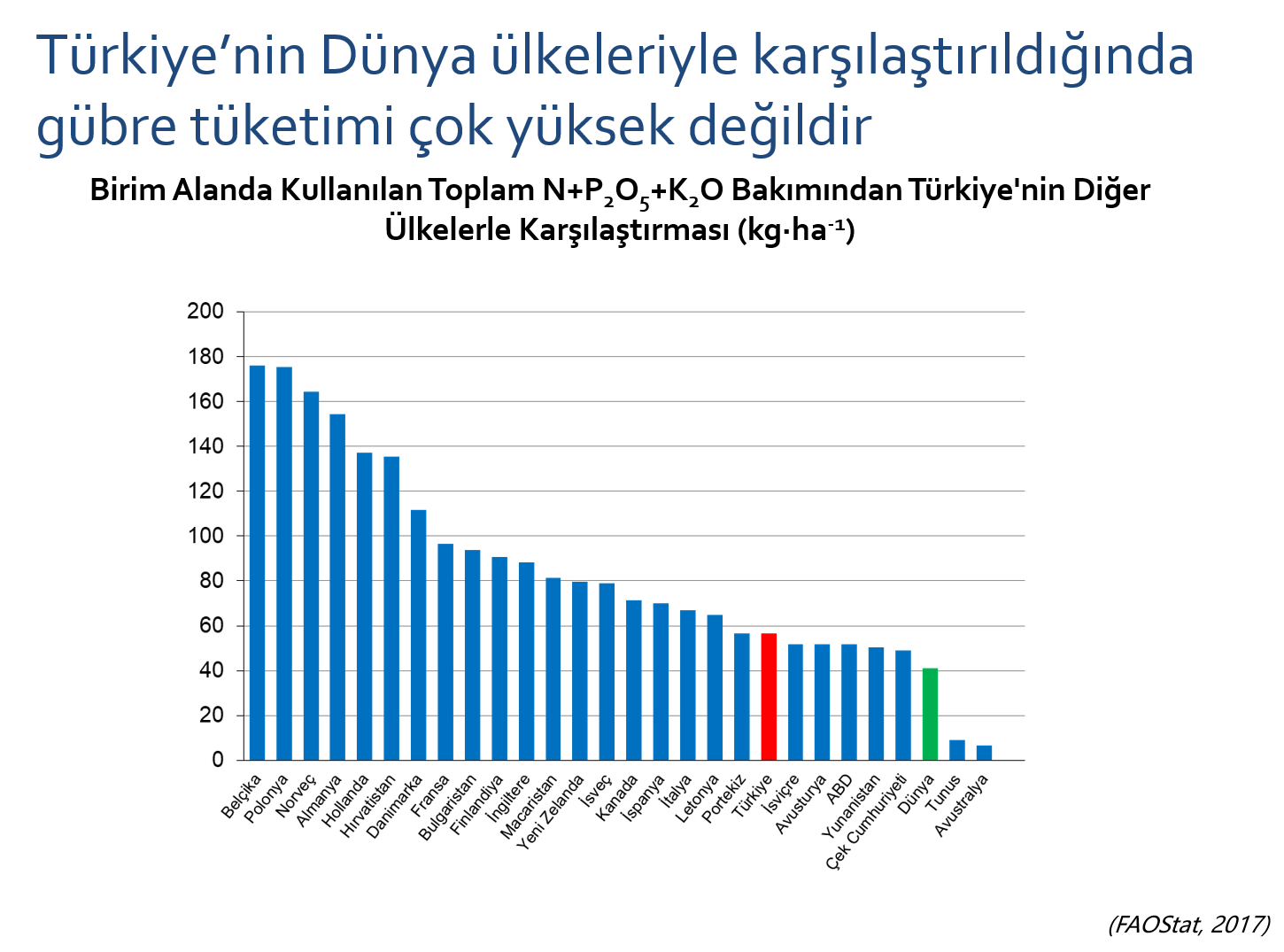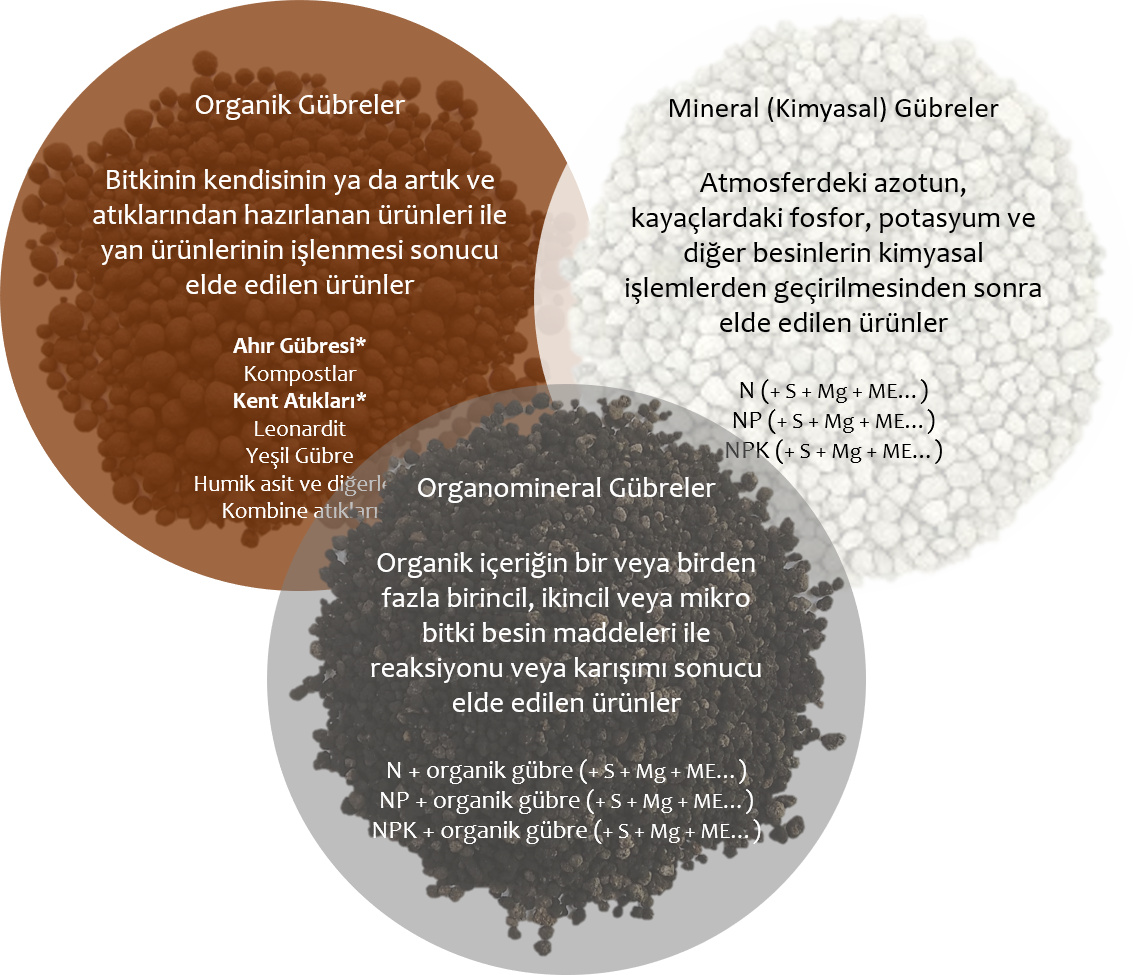The Truths of Some Misperceptions about Fertilizers
In today's sharing, we have deemed it appropriate to include lines with you to get to know plant nutrition materials more closely and eliminate misunderstandings. We will briefly discuss the well-known misconceptions or misconceptions about plant nutrition materials that are widely discussed. We are sure that at the end of our article, we will eliminate some misconceptions about plant nutrition materials, also called fertilizers. Let's start with a short description of fertilizers without wasting time, then!
Fertilizer is defined as “any animal excrement, chemical or vegetable substance that is poured into the soil to increase its yield” in the Turkish Dictionary of the Turkish Language Association, and in Wikipedia, it is “any natural or synthetic application applied to the soil or plant to provide the plant nutrients necessary for the plants to be fed”. referred to as “material of origin”. Yes, it may have bothered you a little, as it did for everyone who first heard the word synthetic in this definition. However, we are sure your discomfort will disappear at the end of our sharing.
While people want to ban fertilizers together with chemical pesticides used in agriculture, claiming that they are harmful to nature and the environment, we insistently oppose this misconception by valuing nature, the environment, and people, and we say that the problem is not caused by the mineral fertilizers used, but by their unconscious use. Especially in our country, this problem has not spread to a wide scale, except for some local regions. You can also see this in the FAO (UN Agriculture and Food Organization) graphic, where the level of fertilizer use in our country is compared with the world countries.

Fertilizer use levels in the world
It is well known to crop production experts that ideal plant growth depends on more than 50 factors, including temperature, humidity, sunlight, physical, biological, and chemical properties of the soil on which it grows, and fertilizers. Yes, fertilizers can be seen as just one of these factors and perceived as unimportant. Well, did you know that 35-40% of the yield increase we have achieved in the last 50 years and our consumption of better-quality products is due to fertilization?
If we are not producing organically, fertilizers are indispensable in terms of food safety, nutritional security, the economy of the producer, and the preservation of the fertility of the soils, as long as they are used correctly. It is useful to remember this point. Since we can come to a common point about the necessity of fertilizers, let's talk about fertilizer types to get to know fertilizers better.
According to the common view in a significant part of our society, since all the materials called fertilizers have similar properties, they can be used interchangeably. However, this opinion is unfortunately not true. As we have mentioned before, the healthy development of plants and reaching their yield potential is possible by taking the nutrients at the optimum level and in a balanced way. We name the materials used to add nutrients that are insufficient in plant growing environments as “fertilizer” and divide them into three “organic”, “mineral (chemical)” and “organomineral”.

Fertilizers under three main headings
Animal-plant waste, green manure, and compost are among the organic fertilizers. However, the amount of useful nutrients in the content of these materials and when the plant needs them is so low that it is necessary to use tons of them to fully meet the needs of the plants. I wish we could only feed them with organic fertilizers and feed everyone, even if the nutritional elements in their content are enough to meet the needs of the plants. But since this is not possible, we have to use mineral fertilizers.
Organomineral fertilizers, on the other hand, are fertilizers obtained by mixing organic and mineral fertilizers to enrich organic fertilizers that have been used in recent years and are poor in nutrients and contribute to the low organic matter in the soil. And considering the current conditions, where these fertilizers will have an important place in the crop production of the future, it stands before us as an indisputable fact.
It would be good to discuss the raw materials used to produce mineral fertilizers. Because there are many wrong or wrongly known truths about plant nutrition products at this point.
First of all, it's good to know. Contrary to popular belief, mineral fertilizers do not contain any synthetically produced substance that is not found in nature.
The raw materials of mineral fertilizers consist of ammonia produced by binding the nitrogen gas in the air we breathe every day in industrial facilities and phosphorous and potassium minerals that exist in nature. By passing them through various industrial processes, we obtain base and top fertilizers in solid and liquid forms.
According to the results of soil and plant analysis, mineral fertilizers are not dangerous for human health and the environment if we use the nutrients needed for the healthy development of our plants and to maintain the fertility of the soil, as well as having an extremely important effect on the health, yield, and quality of the plant produced. . Fertilizers not only increase yield and plant health but also improve soils and reduce greenhouse gases thanks to increased plant growth.
We hope that we were able to find answers to some of the questions in our minds about fertilizers, which are plant nutrition materials.
Emin Bülent ERENOĞLU
12.09.2021
 TR
TR
 EN
EN
